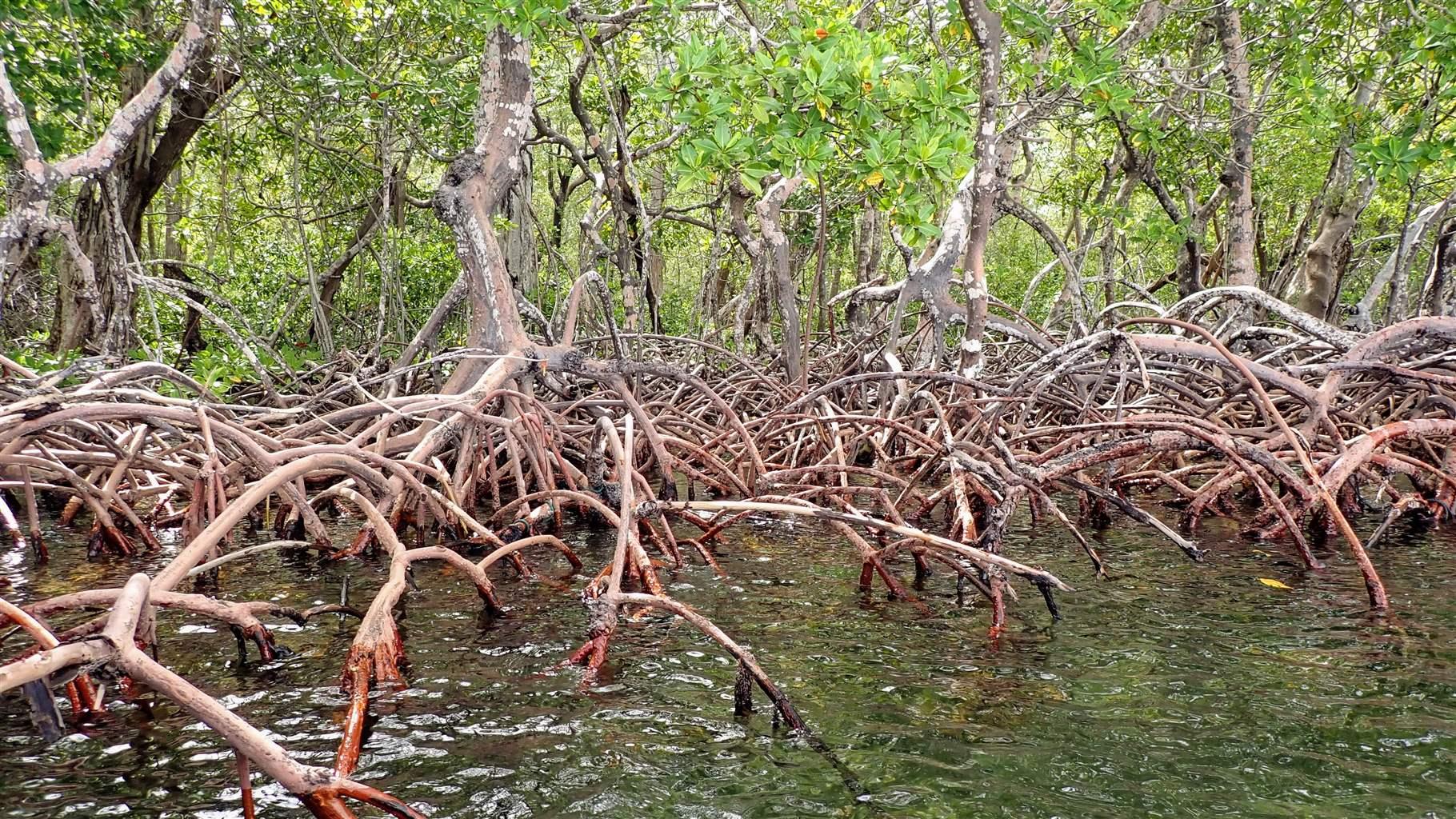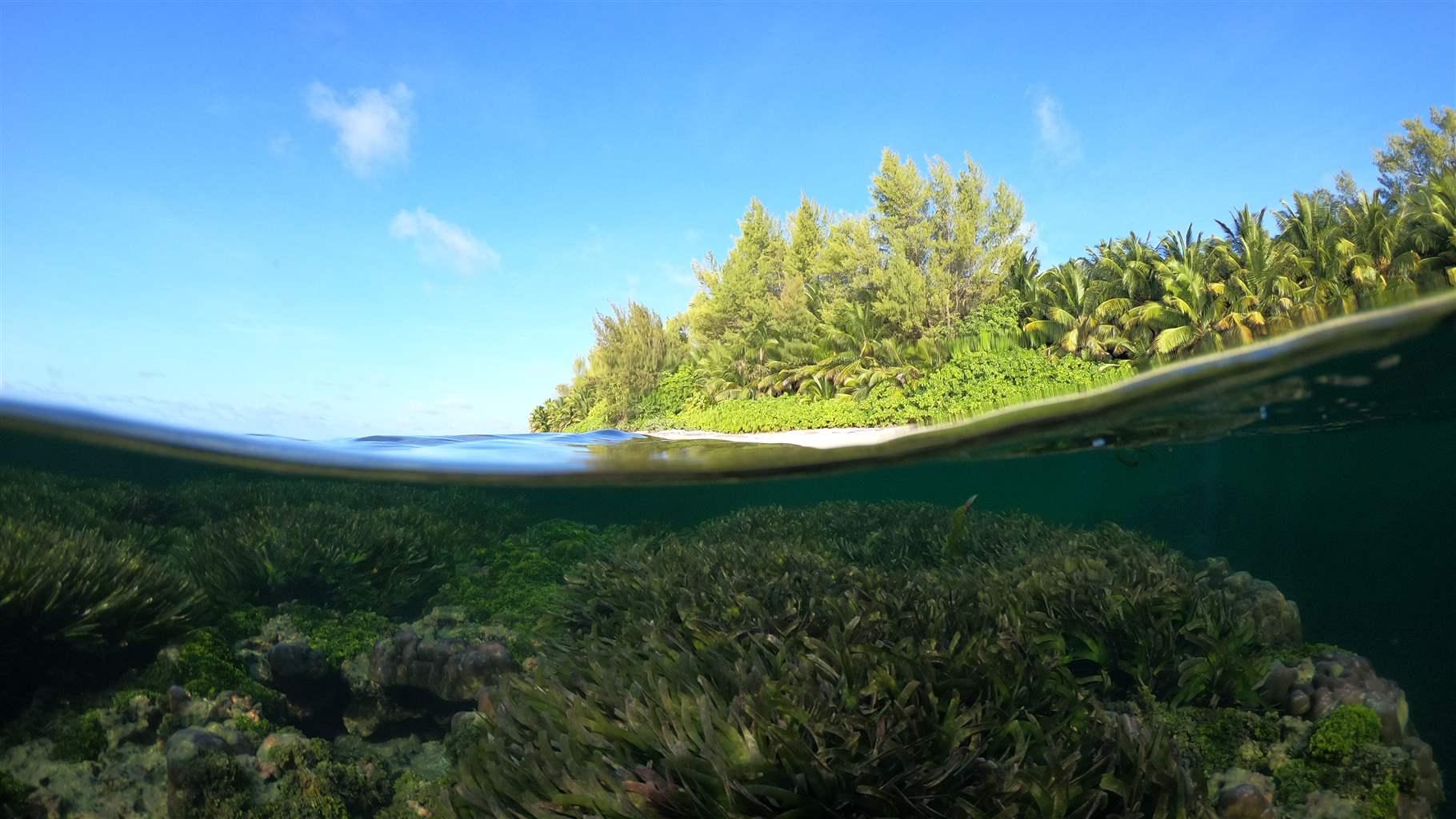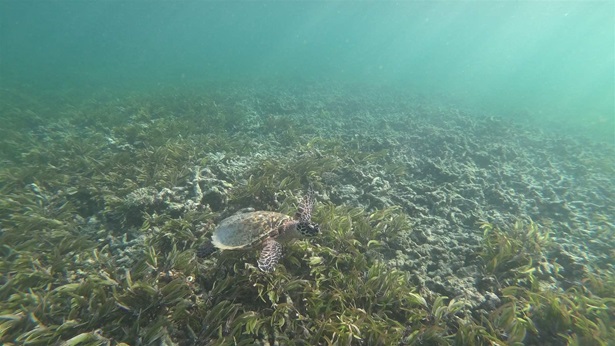More Countries See Benefit of Coastal Wetlands in Fighting Climate Change
Pew partnerships with Belize, Costa Rica, and Seychelles are models for how more countries can meet Paris Agreement commitments

Coastal wetlands—namely mangroves, seagrasses, and saltmarshes—are powerful examples of the role that nature can play in limiting the impacts of climate change.
For one, coastal wetlands boast an incredible capacity to store blue carbon, the carbon dioxide that these ecosystems absorb from the atmosphere. Studies show that coastal wetlands can store three to five times more carbon per acre than terrestrial forests.
Coastal wetlands also help adjacent communities adapt to the impacts of a changing climate— such as storm surges, king tides, and other flooding—by dispersing incoming water and helping diffuse wave energy as it approaches the shore. And mangroves, seagrasses, and saltmarshes provide critical ecosystem services, such as water filtration, that are critical to supporting resilient livelihoods. They also host some of the richest biodiversity on the planet.
All of this makes a strong case for why governments should be maintaining and protecting these ecosystems, including through their nationally determined contributions (NDCs) to the Paris Agreement—that is, the plans laid out by countries as their contribution toward achieving the collective goals of the landmark 2015 global climate agreement. Specifically, in their NDCs, countries can outline commitments to protect and restore coastal wetlands as nature-based solutions to climate change.
Many are already doing so: Ahead of the 28th meeting of the Parties to the United Nations Framework Convention on Climate Change (UNFCCC) in Dubai in November 2023, analysis by the Ocean and Climate Platform indicated that 61 governments referenced these ecosystems within their NDCs.
However, many of those countries’ commitments remain aspirational; that is, they allude to the many potential benefits that coastal wetlands provide but often fall short of outlining the specific, measurable commitments necessary to realizing those benefits. Governments acknowledge that they face challenges in translating potential benefits into actual gains. Among those challenges are:
- Incomplete national assessments of habitat extent or carbon stocks.
- Limited technical and coordination capacities among the multiple government departments responsible for coastal wetlands management.
- The need for a clearer understanding of land uses and tenure, including community and Indigenous rights.
- A lack of access to long-term sustainable financing.
The Paris Agreement requires countries to update their NDCs at least every five years, with each NDC required to be progressively more ambitious than the last. During the 2020-21 update, Belize, Costa Rica, and Seychelles, with help from Pew and other partners, developed approaches to address some of these more common challenges, such as mapping and carbon stock assessments for seagrasses and mangroves, development of stronger national government coordination and policy frameworks, and extensive stakeholder engagement to secure buy-in and understanding of policy goals. The commitments to coastal wetlands that these three countries submitted were some of the most specific and measurable of any NDC at the time.
Encouragingly, a growing number of initiatives globally are now mirroring some of those countries’ actions. Significantly, many of these bodies of work, which Pew and our partners are directly involved in, are occurring at scale, including:
- Seagrass mapping across the western Indian Ocean. Inspired in part by the pioneering work of Seychelles, a project led by Pew and our partners is mapping seagrass ecosystems across the western Indian Ocean, for the first time establishing a habitat baseline and strengthening research and technical capacities that could support countries’ NDC development.
- The Mangrove Breakthrough, an initiative led by the Global Mangrove Alliance and the U.N. Climate Change High-Level Champions. Launched in September 2022, this initiative is seeking to raise $4 billion to support efforts to conserve and restore mangrove ecosystems globally.
- Elevating awareness of the importance of blue carbon and how it can help mitigate climate change. For the first time, blue carbon ecosystems were a formal topic at the 2023 Ocean-Climate Dialogue, a working group within the UNFCCC that convened government officials and civil society stakeholders for two days to map best practices and shared needs.
- Regional coordination of needs and challenges, including through Pew-convened workshops during the 2023 Africa and the Latin America and Caribbean Climate Weeks.
This transition toward harnessing the benefits of coastal wetlands at scale couldn’t arrive too soon. The latest UNFCCC global stocktake—a periodic assessment of the collective impact of pledges made toward achieving Paris Agreement goals, published shortly before COP28—was unequivocal: Countries must take dramatic steps, across all sectors, to meet the pact’s goals and stave off catastrophic warming.
For many countries, conserving coastal wetlands can play a significant role within that scaled ambition. As we approach the next round of NDCs in 2025, Pew’s growing body of work throughout the Latin American, Caribbean, and western Indian Ocean regions seeks to take up this very task.
Thomas Hickey works on The Pew Charitable Trusts’ protecting coastal wetlands and coral reefs project.















